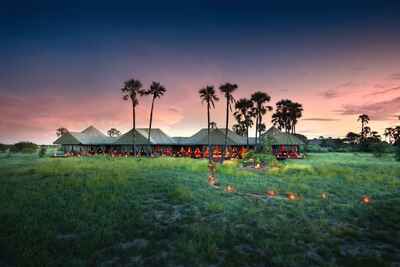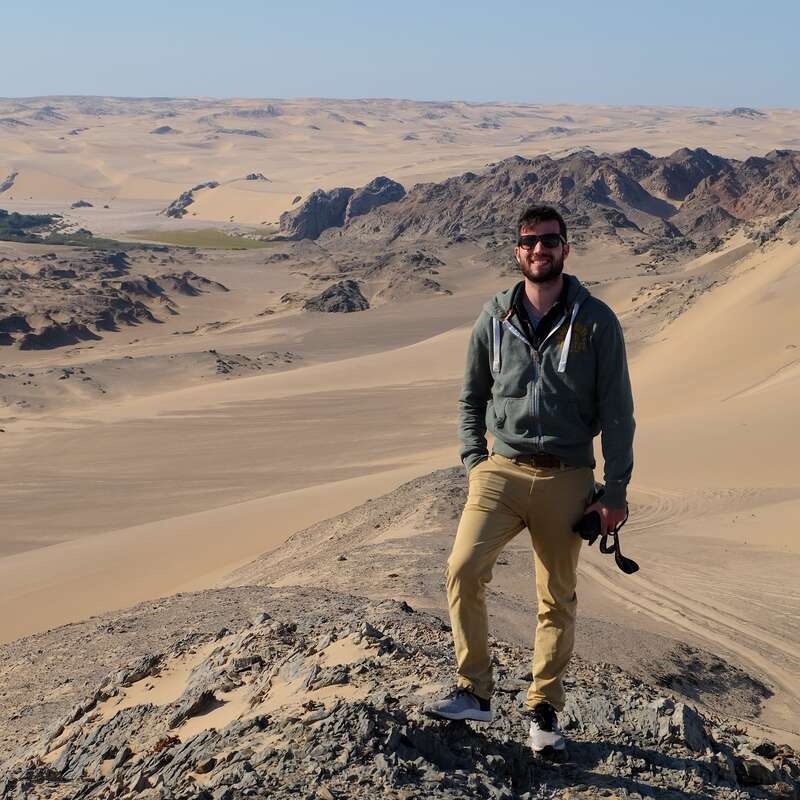About Jack's Camp
A safari camp that houses a national museum has to be worth exploring – and it is!
In fact, it’s just one of many features that makes Jack’s Camp unique.
Rising from the seemingly barren Makgadikgadi Pans, Jack’s looms over its surroundings like an oasis in the desert – epitomised by a circular Bedouin tent where afternoon tea is served to guests seated on low-slung chairs and scatter cushions.
While this may feel eclectic, the rest of the camp has more of a traditional safari style – albeit one whose lounge and dining area is housed in large, marquee-style tents built on raised wooden platforms.
Inside, Persian rugs offset old mahogany furniture, surrounded by artefacts from as far afield as Morocco and Ethiopia, interspersed with feathers, ostrich eggs and more. Photos, maps and diagrams adorn the walls; an extensive library features that national museum collection.
Despite the grandeur, comfort is never far away – in relaxed seating, oversized four-poster beds, hot-water bottles between the sheets on cold nights, a firepit and a cooling pool. Even the toilets are fashioned as thrones.
From visiting families of meerkats to seeking out lions, Bushman walks to spotlit night drives, horseriding to quadbiking, activities are many and various. But for some, the star of the show is Jack’s itself.
Our view
Jack's is a high-quality camp offering a unique experience in a captivating and unusual landscape. Do expect some luxury, romance and remoteness; don't expect lots of big game. The close meerkat encounters, the archaeology (yes, really!) and the odd surprise were the highlights for us. Staying here both contrasts and complements time in the Okavango, rewarding those that take the time to visit whatever the time of year. That said, Jack's is expensive, as are the transfer flights to reach it, so many question its value. Given its unique qualities, we find that an impossible question to answer.
Accommodation
9 tents
Children
Best for 8+
Open
All year
Activities

4WD Safari

Birdwatching

Cultural excursion

Fly-camping

Guided walking safari

Night drive

Private activities

Quad-biking

Sleeping under the stars
Traveller reviews of Jack's Camp
27 real, un-edited reviews from Expert Africa's travellers.
Arrived 18 Mar 2025, 3 nights
"Jack's Camp review"
Overall rating: Excellent
Arrived 30 Jan 2025, 4 nights
"Downton Abbey goes on Safari!"
Overall rating: Excellent
Arrived 24 Sep 2022, 3 nights
"Jack's Camp review"
Overall rating: Good
Arrived 24 Jun 2022, 2 nights
"Jack's Camp review"
Overall rating: Excellent
Arrived 15 May 2021, 2 nights
"Jack's Camp review"
Overall rating: Good
Arrived 15 May 2021, 2 nights
"A Labyrinth"
Overall rating: Good
Arrived 19 May 2017, 3 nights
"Amazing staff at Jack's Camp"
Overall rating: Good
Arrived 4 Nov 2016, 3 nights
"Jack's Camp was exceptional - great safari"
Overall rating: Excellent
Arrived 9 Jul 2015, 5 nights
"A lot happens in the middle of nowhere"
Overall rating: Excellent
Arrived 1 Jul 2015, 3 nights
"A total surprise!"
Overall rating: Excellent
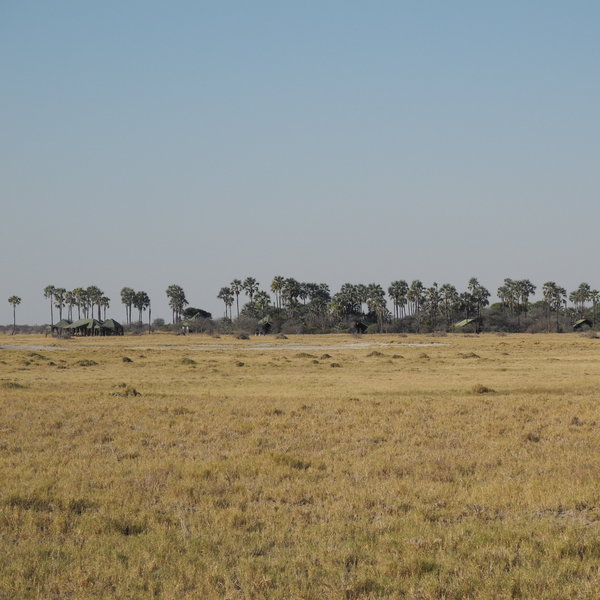
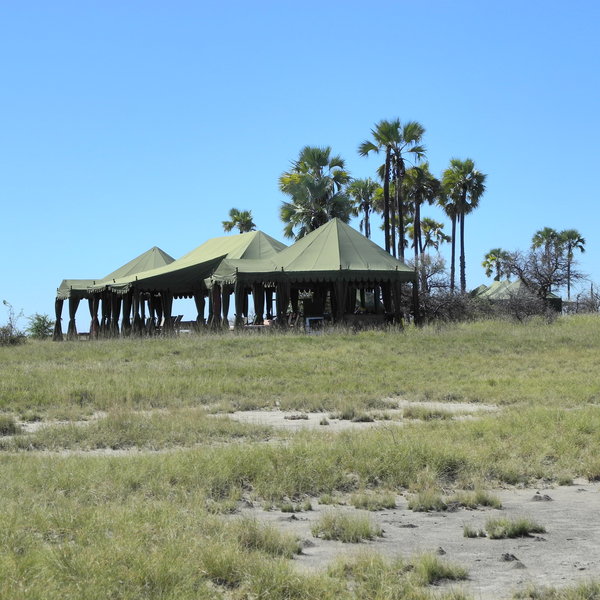
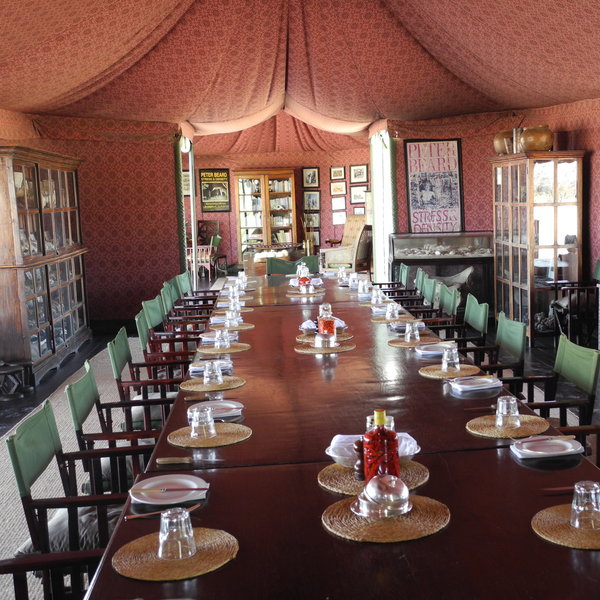
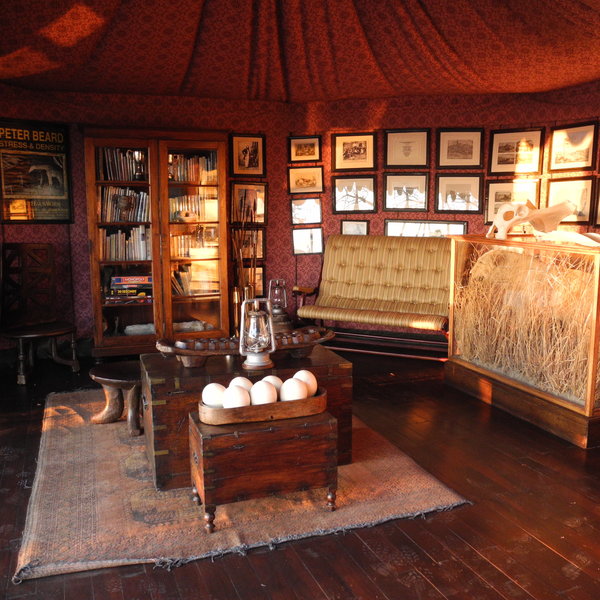
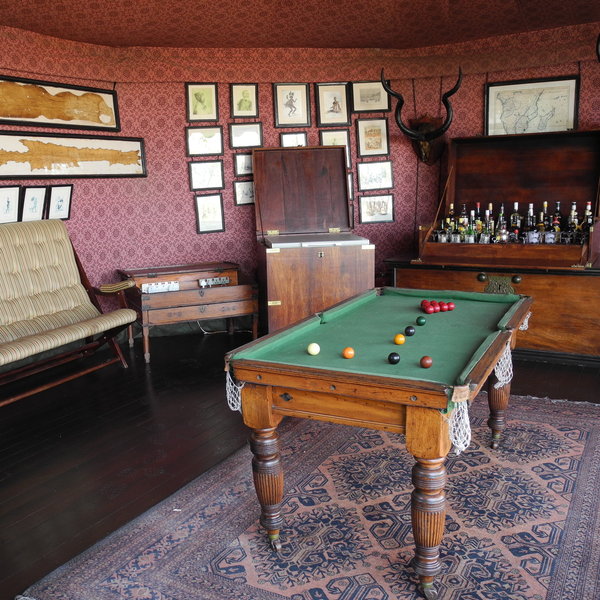
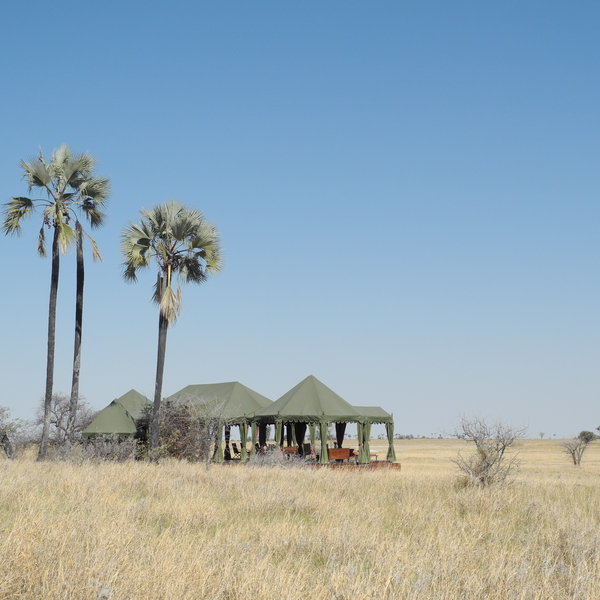
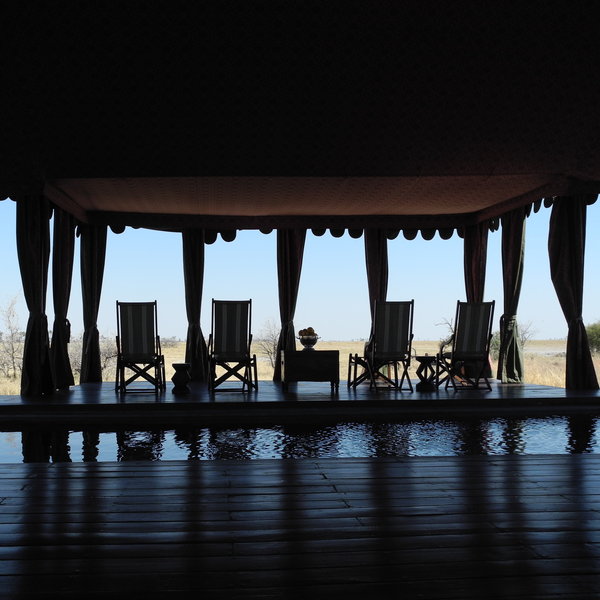
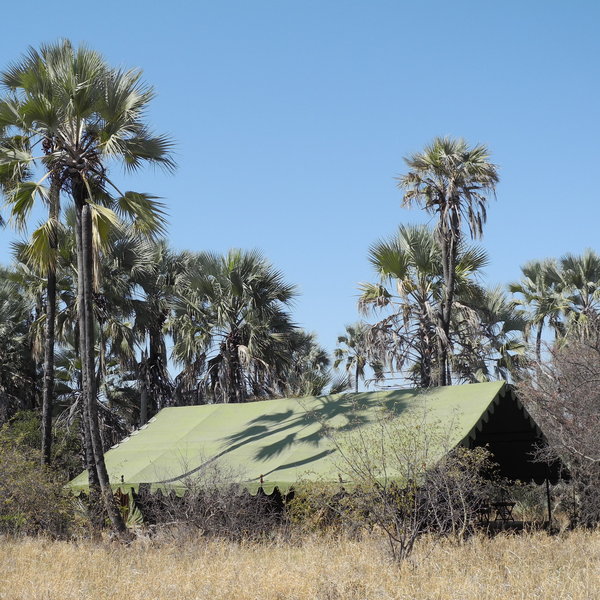
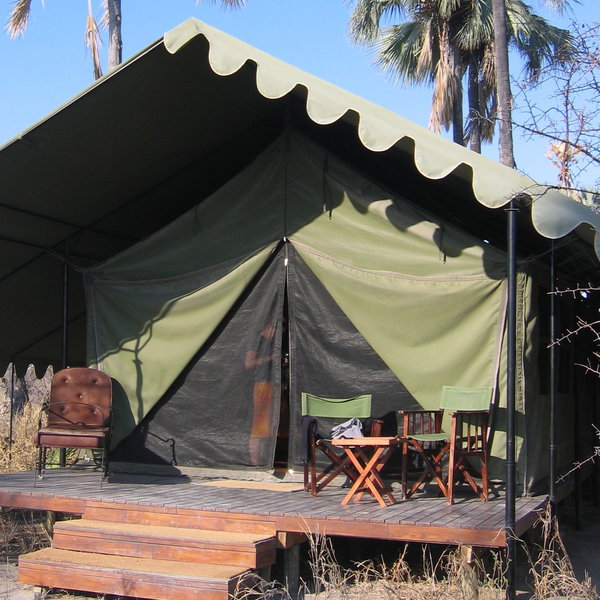
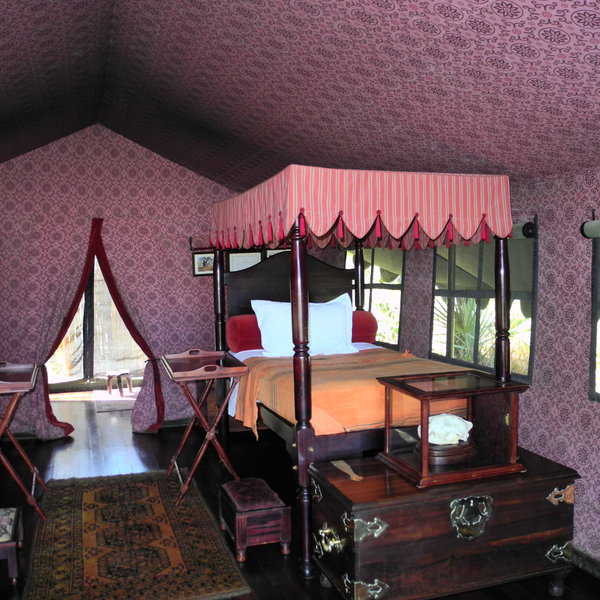
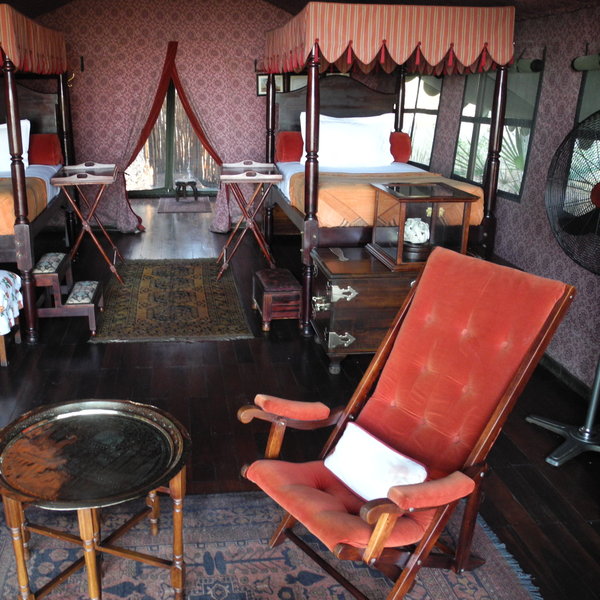
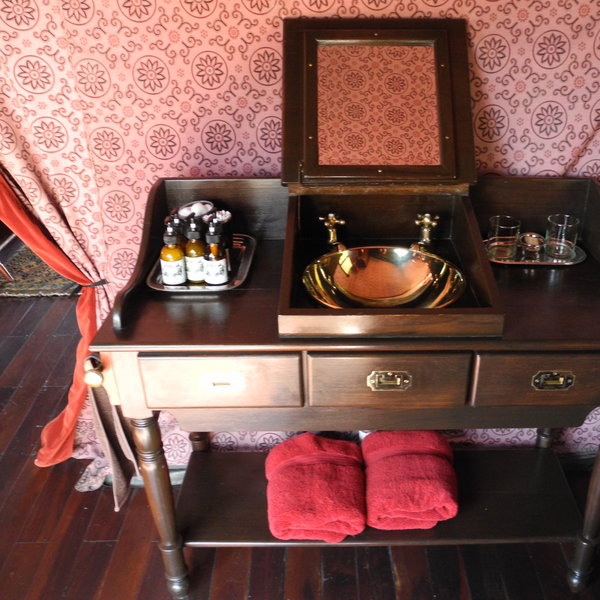
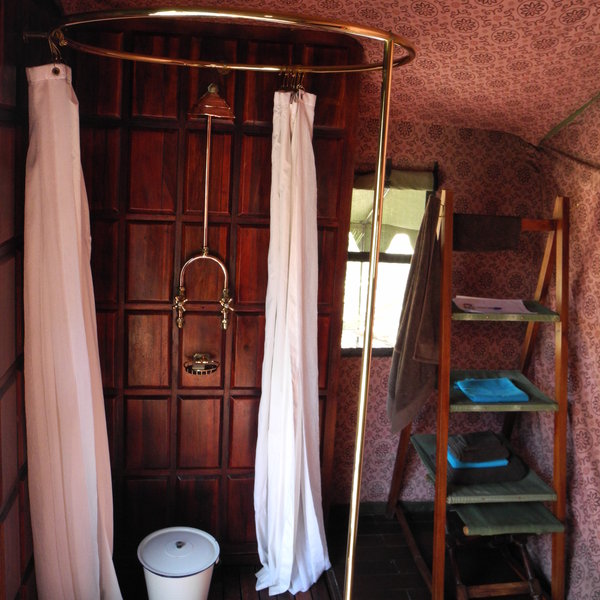
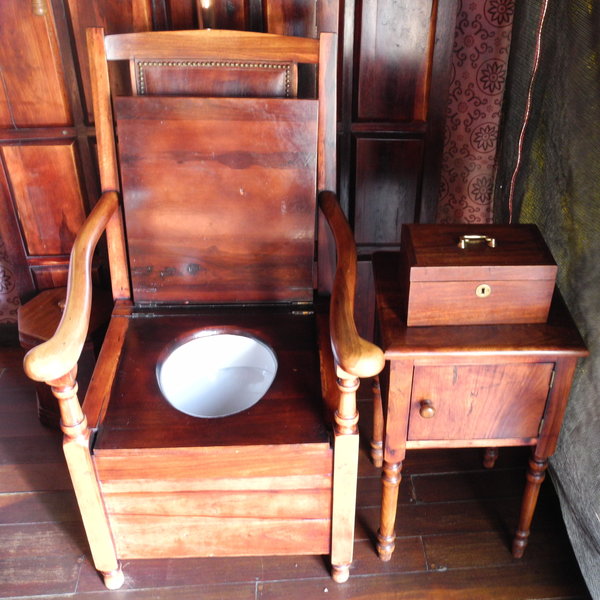
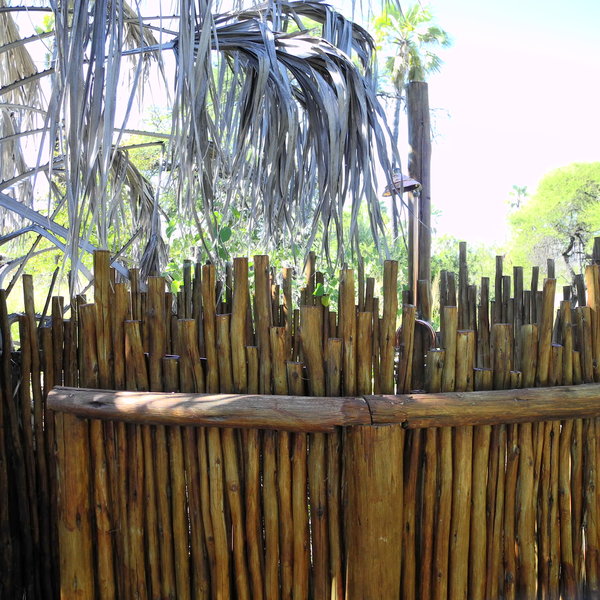
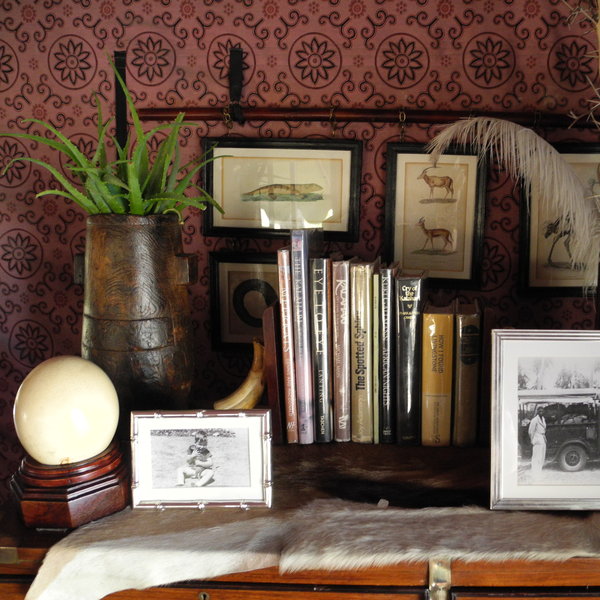
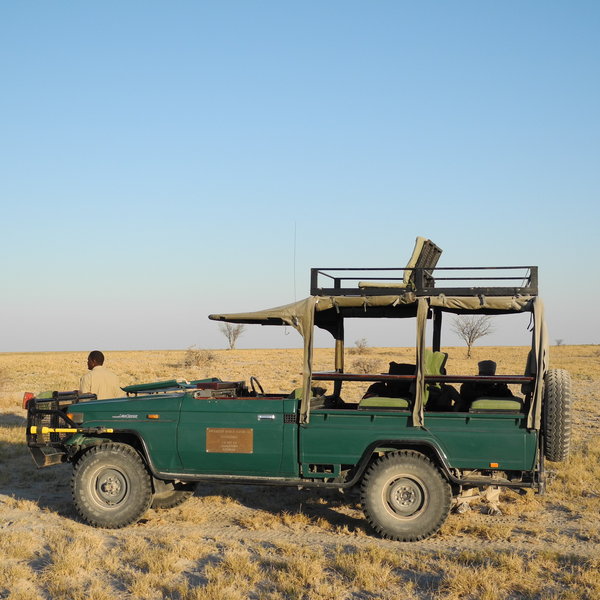
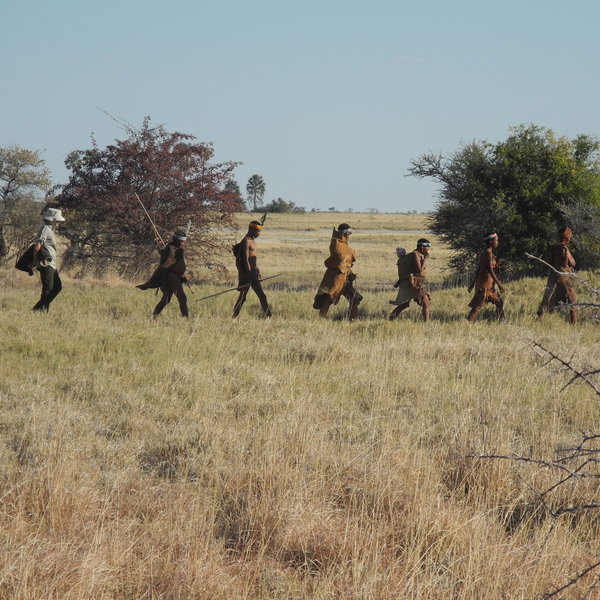

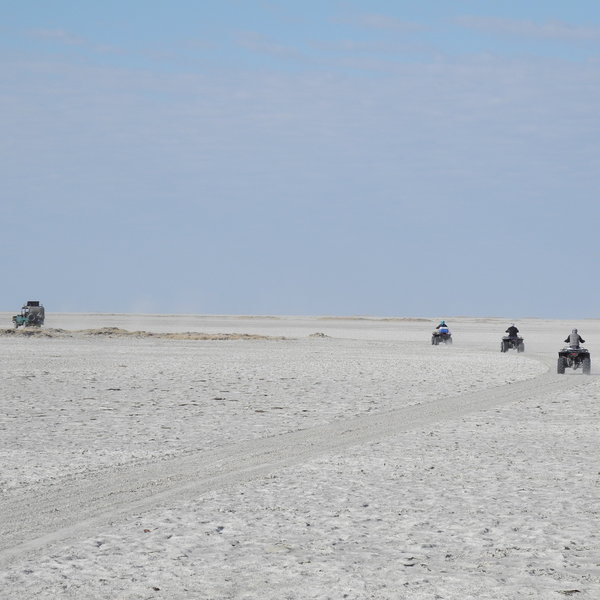
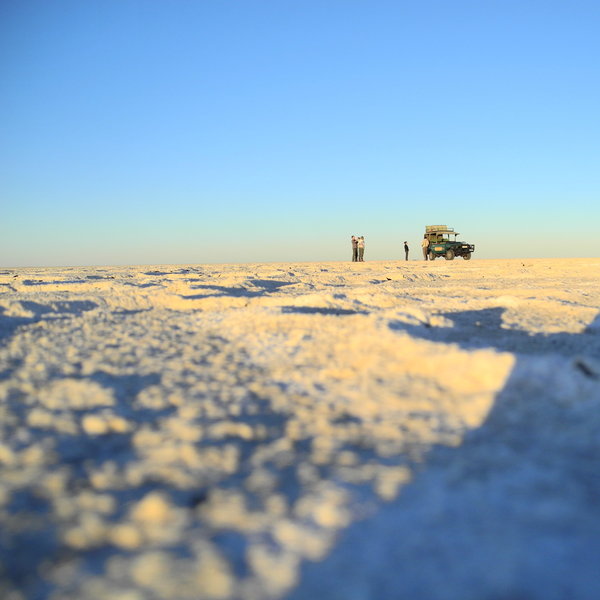
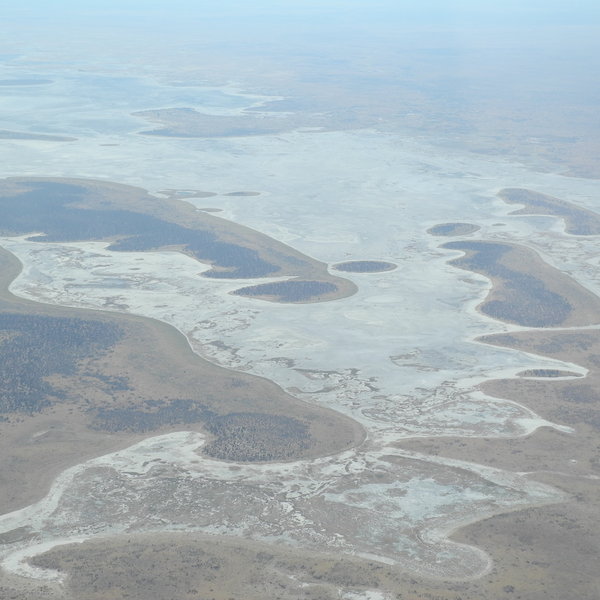
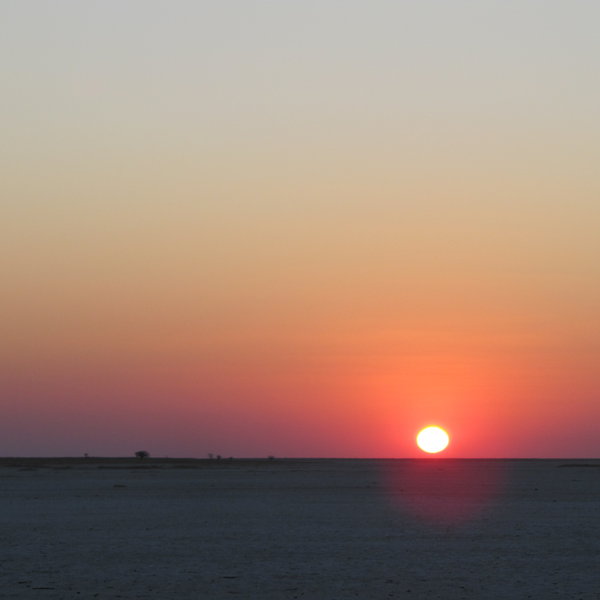
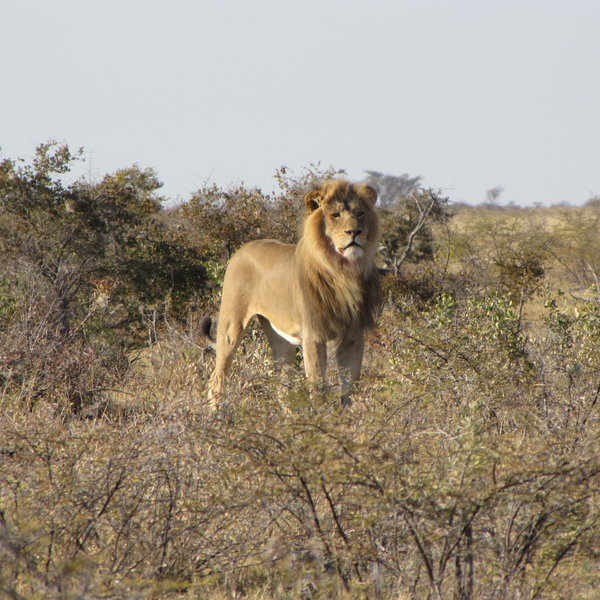
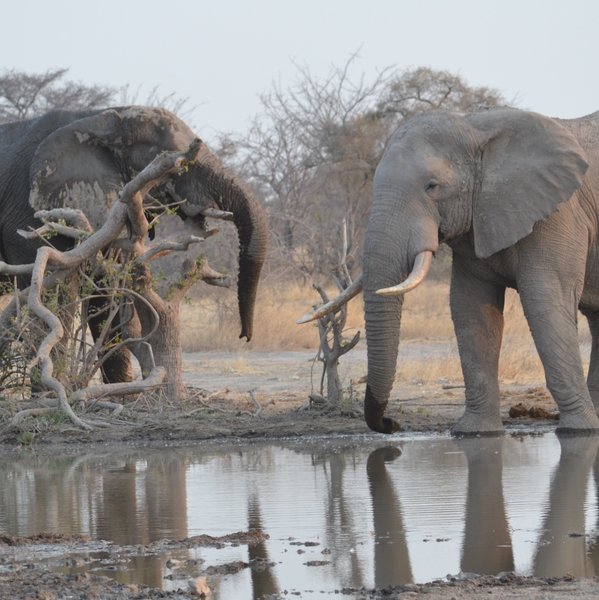
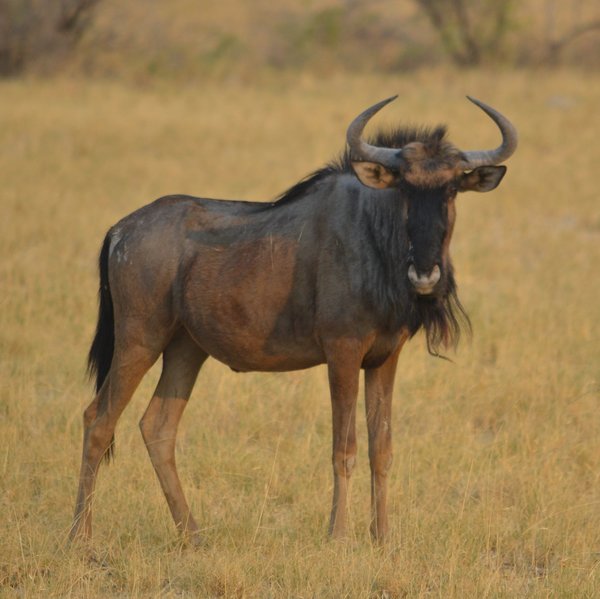
Expert Africa's gallery
When we travel we take lots of photos ourselves to give you a real and un-edited view of the safaris. See our 26 pictures of Jack's Camp to get the candid view.
View gallerySafaris visiting Jack's Camp
Just ideas, we'll always tailor-make a trip for you
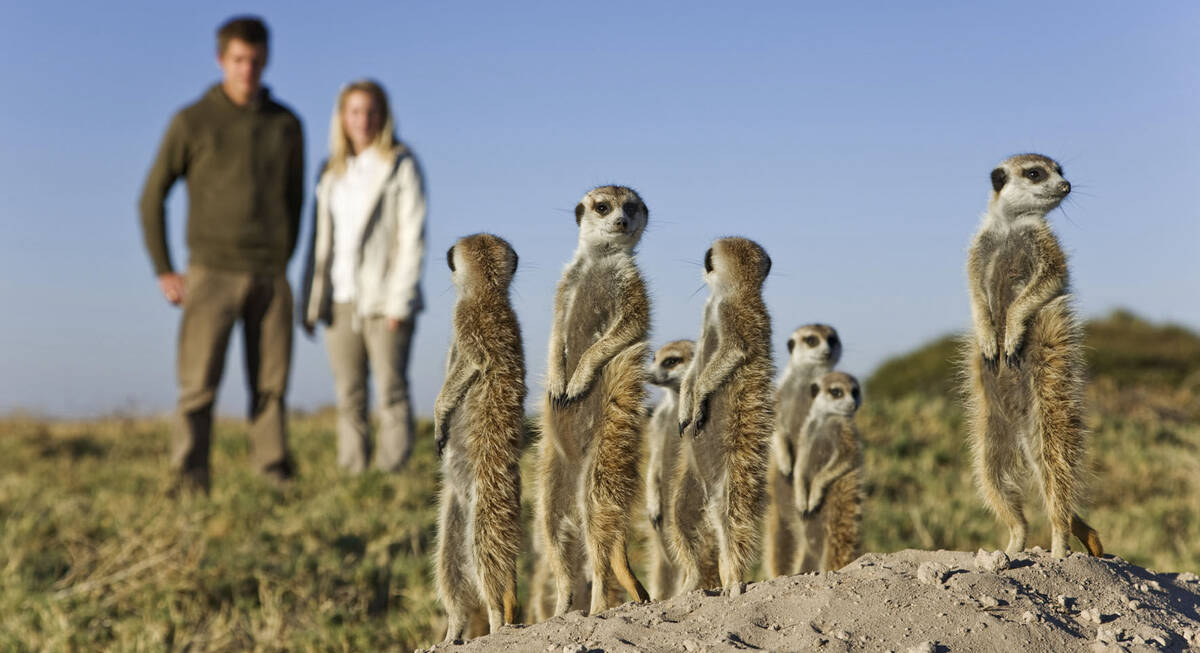
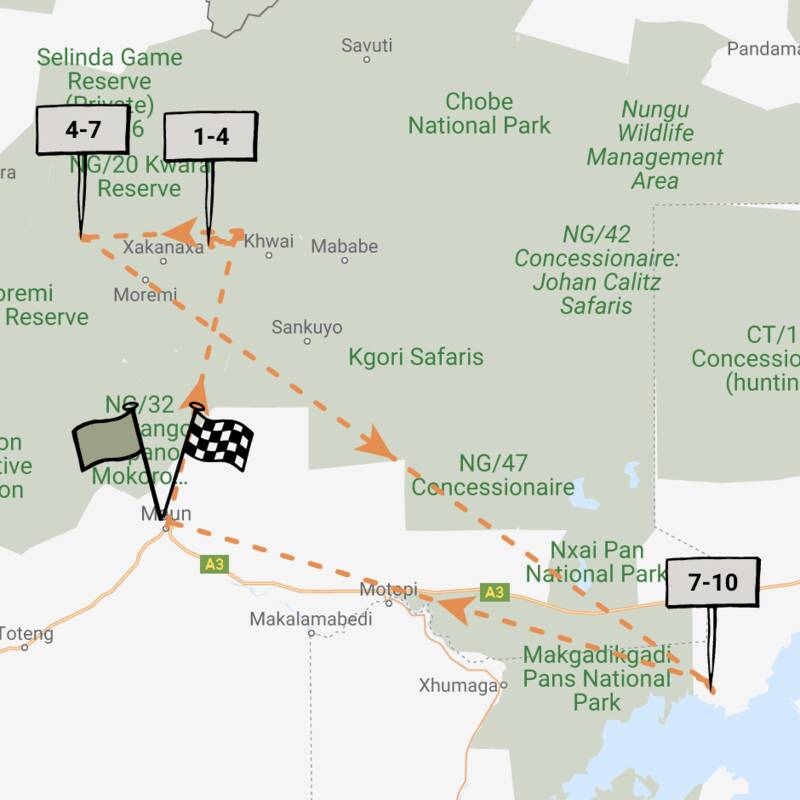
Red Lechwe Safari
9 days • 3 locations • 1 country
MAUN AIRPORT TO MAUN AIRPORT
Superb guiding from three fabulous camps full of character in three contrasting areas for a fabulous safari to the Okavango Delta and Kalahari Desert.
Visiting Moremi & Surrounds, Okavango Delta and 1 other area
US$17,600 - US$28,240 per person
Jack's Camp: Our full report
Beneath a grove of mokolwane palm trees, Jack's Camp has extensive views across Botswana's immense Makgadikgadi Pans.
Although dotted with patches of grassy savannah and photogenic palm islands, the pans are arid for much of the year, and can be relatively devoid of wildlife, but be prepared for unusual surprises. Jack's is one of Africa's most upmarket camps and takes pride in its motto: “Give them what they never knew they wanted.”
The Makgadikgadi Pans is dry for much of the year, and the larger animals are often scarce. During the green season (late December–April), however, the landscape transforms as the pans fill with rain, attracting clouds of flamingo and other migratory birds, while migrating herds of zebra and wildebeest wheel around the grasslands, followed closely by opportunistic predators.
Even in the dry winter months, the addition of pumped waterholes attracts a good number of zebra and wildebeest (and accompanying lions etc), making game viewing a more year-round experience. This is in addition to the desert-adapted wildlife that is here year-round, such as ostrich, springbok, steenbok and black-backed jackal, while by night you might come across brown hyena, aardwolf, porcupine, bat-eared fox, honey badger and scrub hare. Kalahari lion, cheetah and leopard also roam this area, and though they are elusive, they are spotted occasionally, especially lion.
Jack's Camp itself has been beautifully constructed in a very classical safari style, providing an inviting and quite romantic oasis in this harsh environment. The early settler décor throughout the camp features a mix of old mahogany furniture, Persian rugs, Moroccan and Ethiopian artefacts and natural objects such as ostrich eggs and feathers.
Large custom-made marquee tents built on low, raised wooden platforms house the main areas. The dining and lounge tent is adorned with a variety of photos, maps, diagrams and natural history objects, and houses an extensive library: an impressive collection that is registered as a national museum. (As such, displays in the main area include skulls and taxidermy specimens, which may not be to everyone’s taste, as well as human artefacts such as stone tools found in the area.) A large table occupies the dining room, with comfy seating areas filling the remaining spaces.
Steps lead down to a firepit where guests can enjoy social evening drinks under the stars. A short stroll away there's another enormous open-sided tent which shelters the swimming pool, built into a wooden platform and surrounded by loungers. In the other direction, a circular Bedouin tent adorned with low-slung chairs and scatter cushions is used for informal afternoon tea.
Behind the main area is a small tent housing a curios shop selling souvenirs and mementos along with field guides, sunscreen and more.
Pathways lead to the nine walk-in tents at Jack's – the furthest about five minutes' walk from the main area. Each of these large tents – two doubles and seven twins – is raised on a wooden platform with a private wooden deck offering expansive views. Constructed of khaki-green canvas with a patterned lining, the tent opens through a zipped door into the bedroom, where you'll find an oversized king or twin queen four-poster beds. There's a seating area, too, along with a desk, chest of drawers, a few random natural history books and an open canvas shelving and hanging space.
A canvas-and-cloth partition separates the bedroom from the en-suite bathroom, where the washstand, with a copper basin and inlaid mirror, is made from an old writing desk, and a quirky flush toilet is fashioned into a wooden throne. Indoor and outside showers (the latter with a wooden screen for privacy) are complemented by plenty of toiletries.
A standing fan helps to keep the tent cool, and hot-water bottles warm the beds on cold winter nights (May–July). We understand that the camp is also in the process of installing woodburning stoves in the tents for these cooler months.
Jack’s Private Camp was under construction during our last visit, in December 2023. Now completed it offers travellers an even more private and exclusive experience, yet still in the style of Jack’s Camp.
Guided activities from Jack's Camp focus on the unusual aspects of this area. The guides are well-versed, and sometimes real experts, in aspects of this environment and aim to give you an understanding of its fascinating geology, archaeology and anthropology, as well as a chance to observe its scarce wildlife. You'll be travelling in open vehicles with up to six guests in three rows of three seats, so everyone is guaranteed a “window” seat.
Do note that the activities and therefore the range of experiences at Jack’s Camp vary through the year. Speak to us if you would like to know more.
When we last stayed at Jack's, in October 2017, we saw lions with a fresh kill, and had two separate encounters with brown hyena at close quarters. On our night drives we were also lucky enough to see bat-eared foxes, masses of spring hare, a brown hyena with a 1½-month-old cub and both aardwolf and an aardvark – the latter a very exciting first sighting for this member of our team!
- Although we didn’t stay at Jack's on our last visit in December 2023, a real highlight of our time in the area was spending time with one of the resident families of meerkats. These have been semi-habituated and, while they are wild animals, they more or less ignore visitors. Following the meerkats as they forage across the Kalahari for grubs, frogs and scorpions is a fascinating experience; they're exceptionally cute, very inquisitive and most will allow you to follow or sit with them at very close proximity.
- Nature drives in and around the Makgadikgadi Pans National Park are offered, but since the collapse of Chapman’s baobab, and due to the relatively restrictive park rules, most activities take place on the private reserve. In the green season, the zebra migration (the second largest in Africa) is a major feature of drives here.
- Spotlit night drives are enjoyed on the return to camp in the evenings, and there are also night drives after supper, particularly in the dry season (June–November), when insects numbers are low.
- The “Bushman experience” at Jack’s is an informative nature walk led by a group of Zu’/hoasi Bushmen. Concentrating on the plants and smaller animals, they provide an interesting glimpse into a dying culture. This activity is sensitively run, and we believe it is one of the best of the growing number of similar activities we have taken part in during our visits to Botswana.
- Quadbike excursions onto the 6,500km² Ntwetwe Pan are available during the dry season (May to October). Because of the fragility of the pans, quadbiking is possible only during this period, sticking strictly to set tracks. (NB: It's essential that you read the quadbike warning in the Health & Safety section below for our comments on bike helmets and insurance on this activity.)
- Horseriding is also available here at additional cost, for both beginners and experienced riders. You can choose between rides of a few hours or – for experienced riders only – a multi-day trip of up to five nights.
- A helicopter is based at the camp with space for up to three passengers at a time. This can be used for transfers (doors on) or scenic helicopter flights (doors off). Scenic flights can range from 15 minutes to much longer trips including visits to Kubu Island, Nata Bird Sanctuary and beyond, often including lunch or a champagne stop. However, please note that any helicopter flights are at an additional, substantial charge.
Activities
4WD Safari
Birdwatching
Cultural excursion
Fly-camping
Guided walking safari
Night drive
Private activities
Quad-biking
Sleeping under the stars
Families & children
- Attitude towards children
- In principle, children of all ages are welcome at Jack's Camp. However, families with children aged under eight are required to book a private guide and vehicle at substantial additional cost. There is no family tent at Jack's Camp, so parents with younger children must share a tent with their childen. That said, we understand that with two queen-size beds it is possible to get a family of up to four with small children in one tent.
- Property’s age restrictions
- None
- Special activities & services
- None
- Equipment
- Camp staff are happy to provide childminding services on request, though they are not qualified in childcare. Activities that are popular with children, such as visiting the meerkats, can be repeated on request. There is a kids' menu available and meals can be served earlier if required.
- Generally recommended for children
- We recommend Jack's Camp for families with children aged eight and over. Families with younger children may prefer to consider Camp Kalahari, where there is no requirement to book private activities at additional cost.
- Notes
- Lion, elephant, leopard and other potentially dangerous animals can and do sometimes pass through camp, despite an electric fence designed to deter them. As such, children should always be closely supervised by their parents.
Food & drink
- Usual board basis
- Full Board & Activities
- Food quality
- Although we didn’t stay at Jack’s Camp in 2023, in the past we've been very impressed with the quality, variety and presentation of food here, especially given its location. With advance notice, dietary requirements and private dinners can be catered for.
On our most recent stay, in October 2017, we began each day with a breakfast buffet of cereals, yoghurt and fruit salad; tea and coffee, plus bacon and eggs cooked to order, or eggs benedict, along with sautéed spinach served with red and yellow peppers.
For lunch we were served delicious Moroccan kebabs with lentils, accompanied by home-made bread. On our second day, we enjoyed simple, but tasty sandwiches of roast beef, turkey, or cucumber.
Afternoon tea is a selection of savoury and sweet treats. Across two teas we were offered corn-and-goats’-cheese beignets, mini scones, mini cheese quiches, chocolate brownies, vanilla cupcakes and home-made biscuits.
Nibbles before dinner comprised cheese triangles with dipping sauce on one evening, and vegetable samosas with a sweet chilli sauce the next.
For dinner our first night we enjoyed carrot, orange, and ginger soup, followed by chicken curry with rice, potatoes, chutney and cucumber; and rounded off by lemon posset with shortbread. On the second evening we tucked into pea and ham soup to start; lamb shank with wilted spinach and potatoes for the main course; and sticky date pudding for dessert. - Dining style
- Group Meals
- Dining locations
- Indoor Dining
- Further dining info, including room service
- Private dining can be arranged on request.
- Drinks included
- There is a well-stocked bar from which all the drinks – bottled water, soft drinks, local beers, spirits and a selection of (generally) South African wines – are included in the rates. Special or exotic drinks can be ordered in with advance notice, at additional cost.
Our travellers’ wildlife sightings from Jack's Camp
Since mid-2018, many of our travellers who stayed at Jack's Camp have kindly recorded their wildlife sightings and shared them with us. The results are below. Click an animal to see more, and here to see more on our methodology.

100% success

83% success

83% success

50% success

33% success

33% success

33% success

17% success

17% success

0% success

0% success

0% success

0% success

0% success
Getting there
- Location
- Kalahari's Salt Pans, Botswana
- Ideal length of stay
- We'd recommend a three-night stay; two nights really is too short, and four would probably be too long, unless you're planning to factor in time on whole-day expeditions out of camp. We’d usually recommend combining Jack’s Camp with other locations in more wildlife-rich areas of Botswana, for example, its sister properties Duke’s Camp or Tuludi in the Okavango.
- Directions
- Jack's Camp is a 50-minute flight by light aircraft from Maun, followed by a 4WD transfer to camp of roughly 15 minutes.
- Accessible by
- Fly-and-Transfer
Special interests
- Riding safaris
- The grasslands and vast pans of the Makgadikgadi are a stunning place to enjoy horseriding in Botswana. Trips from Jack’s Camp last from a few hours to up to five nights and are suitable for a range of riding experience and ability.
- See ideas for Riding safaris in Botswana
- Cultural Experiences
- Jack's Camp offers an insightful and authentic walk with Bushmen. Going out with Bushmen guides, you'll learn about the flora and fauna integral to their lifestyle, and hear about their culture. We consider that this is one of the best such walks on offer.
- See ideas for Cultural Experiences in Botswana
- Wildlife safaris
- Although wildlife densities at Jack's Camp are generally low, visitors can get exceptionally close to habituated meerkats – which for many is one of the best safari experiences in Botswana. This, along with the zebra and wildebeest migration and glimpses of black-maned lion, brown hyena and other desert species, makes the wildlife here pretty special.
- See ideas for Wildlife safaris in Botswana
Communications
- Power supply notes
- There is a back-up generator in case of cloudy days or other power interruptions.
Universal charging sockets are available in the tents and the main area and should allow travellers to charge most electrical items. - Communications
- There is WiFi for guests to use here but it is limited to the vicinity of the curio shop.
- TV & radio
- None
- Water supply
- Borehole
- Water supply notes
- There is hot and cold running water in each tent, as well as a flush toilet.
Health & safety
- Malarial protection recommended
- Yes
- Medical care
- Both camp managers and guides are first-aid trained and guides carry field kits in their vehicles. A comprehensive trauma first-aid kit is kept at the camp. The nearest doctors are a short flight away in Maun or Francistown. In an emergency, guests would be flown to Johannesburg, but please note that it is only possible to fly out of camp during daylight hours as the bush airstrips do not have any lighting at night.
Quadbike warning: with an abundance of caution, we feel that it's important to let prospective visitors know that although safety helmets are provided for the quadbike activities at Jack's Camp, there is scant mention of them by staff. They are left hanging up on a post at the side with the guides just demonstrating how to use the khikoi as a head wrap. We would very much recommend that you ask to use one of the helmets for your personal safety.
We understand that the camps have operated quadbikes regularly here since 1992, and that at time of writing there has never been a serious accident. The camp's team comments that they regard this activity to be safe even without helmets, especially as they generally keep to specific tracks and don't speed; and that the area is largely flat and free of other traffic. We're not aware of any of our travellers having any problems over the years prior to the helmets being introduced in 2016, and all of our team members who have visited have enjoyed quadbiking activities without any problems or concerns.
If you are concerned about the safety aspects of this activity per se, please tell us very clearly and specifically in writing, before you travel, and request that we confirm to you in writing that we have arranged for you to be driven across the pans in a vehicle instead of using a quadbike. If you leave this decision until you're at camp, and then elect not to do the quadbike activity, alternative arrangements may not be possible, although, of course, you could always relax around the camp and swimming pool instead. (Sadly, refunds aren't possible if you choose to miss activities like this at a camp.)
As with any activity, please check the details of your travel insurance to ensure that you are fully covered in the case of quadbiking accident. Be aware that some insurance will provide cover for bikes up to a certain engine power, but not beyond – so you need to check such clauses particularly carefully. - Dangerous animals
- High Risk
- Security measures
- In case of potentially dangerous wildlife passing through this unfenced lodge, guests are escorted to their tents after dark. Guides and managers are accommodated close by and an airhorn is provided in the tents for attracting attention in the event of an emergency at night.
- Fire safety
- There are fire extinguishers in each tent, in the common areas and in each safari vehicle. Fire hoses are also strategically placed around the camp.
Useful info
- Disabled access
- On Request
- Laundry facilities
- A laundry service is included – excluding underwear, for which washing powder is provided in each tent.
- Money
- The camp does not offer any money-exchange facilities. There is a safe in the camp office that guests are welcome to use, but there are no safes in the tents.
- Accepted payment on location
- Mastercard and Visa credit cards are accepted; Amex and Diners are not. Cash payments may be made in GB pounds, US dollars, euros, South African rand and Botswana pula.
Plan and book your trip with Expert Africa
All of our trips are tailor-made, so we'll always adapt them to suit you. Talk to an Expert and let us plan and arrange your perfect trip.

Talk to an Expert
Call or email us now! We’ll match you with the Specialist in our team who is best suited to help you. Then together we can start planning your trip.

Set up your itinerary
Based on our experience and your ideas, your specialist will create a detailed, costed itinerary. We’ll refine it together, until we have a trip that you’re perfectly happy with.

Prepare for your trip
The same Specialist will make the seamless arrangements for your trip, send you detailed travel documents, and be available to answer any questions before you depart.

Travel with peace of mind
After you set off, you’ll be cared for by our partners in Africa, most of whom have worked with Expert Africa for decades. And if you ever need us urgently, we’re available 24/7.

When you return
We love to learn about your trip, and so will always be grateful if you’ve the time to give feedback to your Specialist when you return.
Jack's Camp's location
Look closer at the environment and surroundings of Jack's Camp.
Excursions from Jack's Camp
Optional extra day-trips and excursions possible whilst you're staying at Jack's Camp. Talk to us: these are usually best arranged before you go.
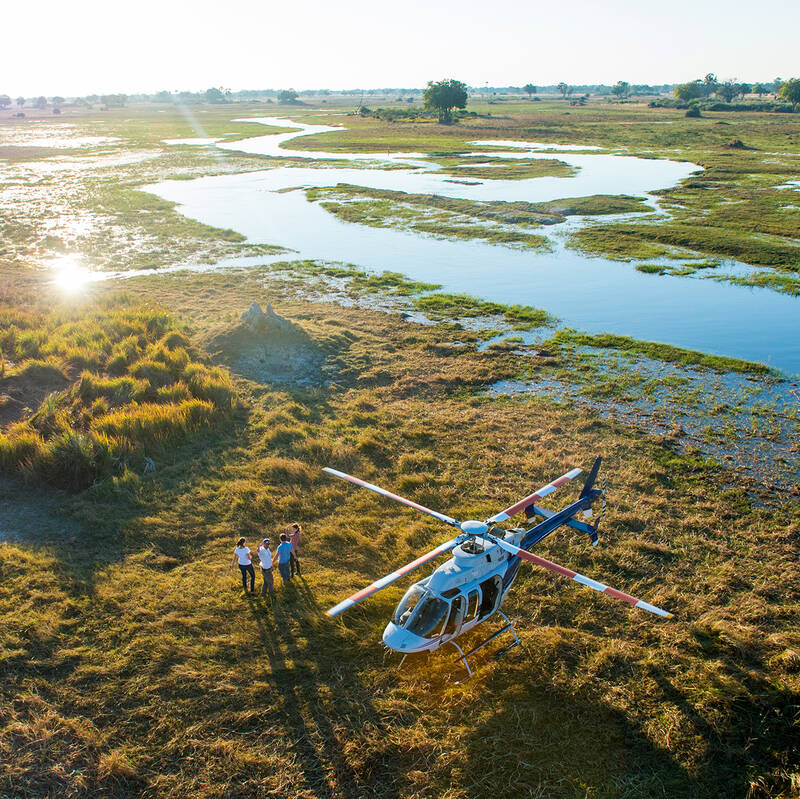
Helicopter Flight - Botswana
Various: from 30 minutes to half a day.
Low-flying, agile and offering superb views, helicopters are an ideal way to move around the Okavango Delta.You can use them instead of fixed-wing inter-lodge transfers or as an addition to other wildlife watching activities, and of course, helicopters can hover to allow that perfect pic, whereas fixed-wings can’t.
More about Helicopter FlightOther lodges in Kalahari's Salt Pans
Alternative places to stay in this same area.
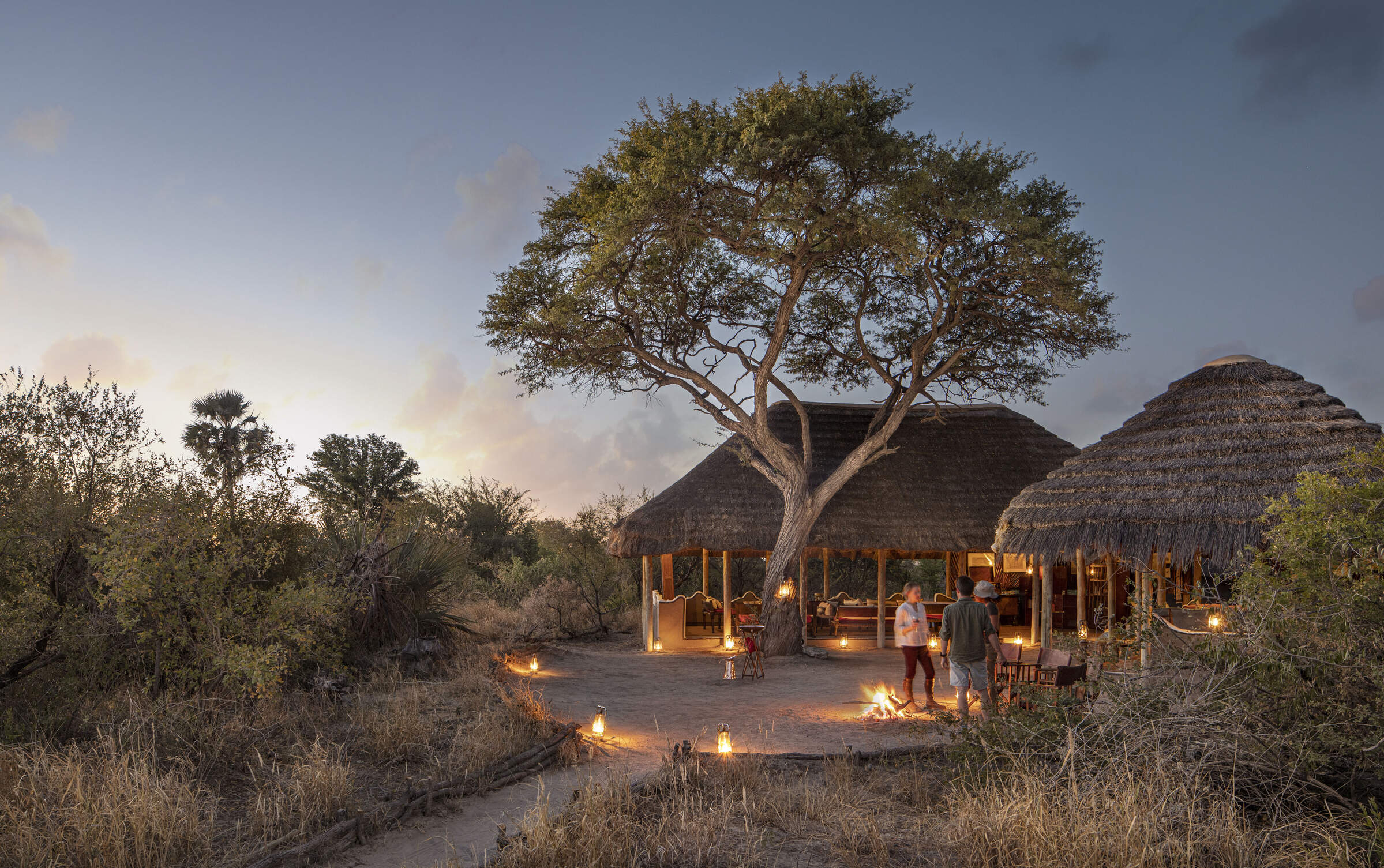
Camp Kalahari
Overlooking the Makgadikgadi Pans, Camp Kalahari is great value; come for quadbiking excursions on the salt pans, cute meerkats, excellent Bushman walks, and interesting 4WD safaris.
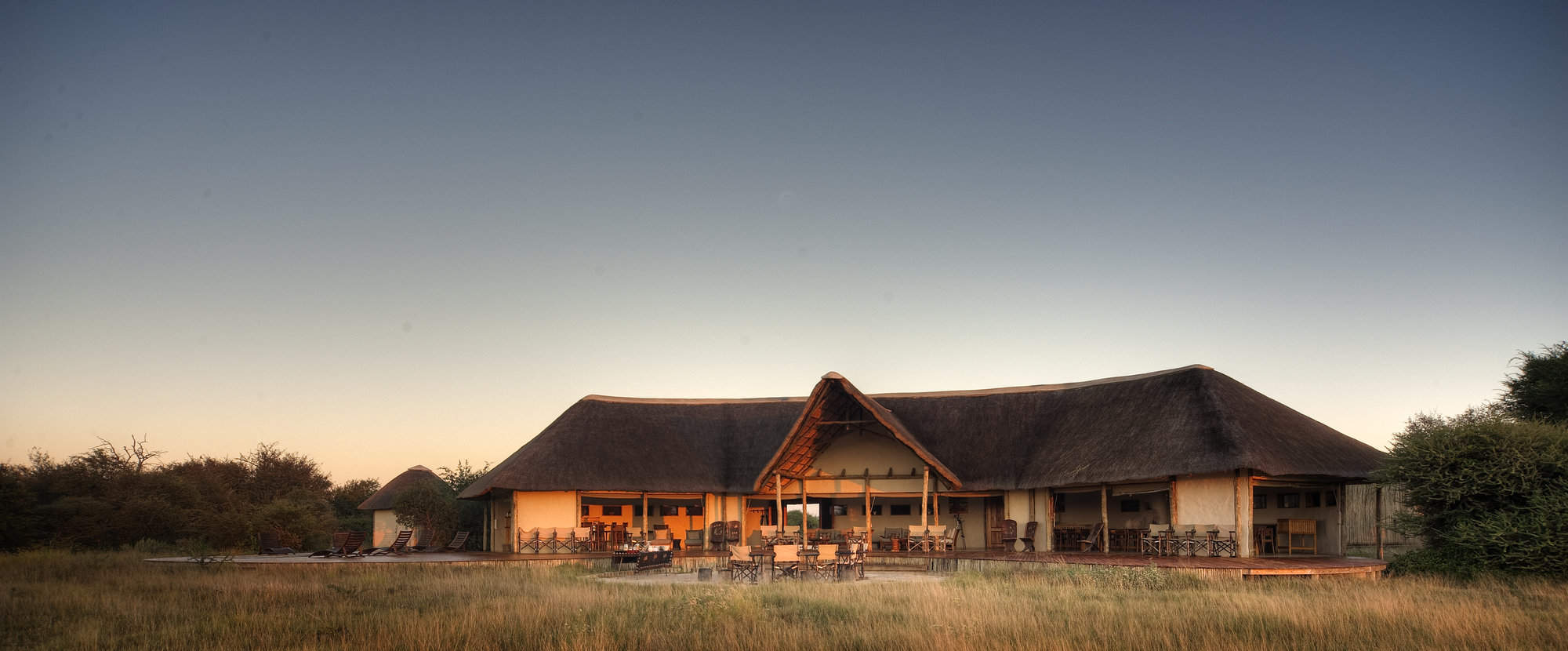
Nxai Pan Camp
Offering good summer game viewing and visits to Baines Baobabs, the comfortable Nxai Pan Camp is currently the only permanent camp in Nxai Pan National Park.
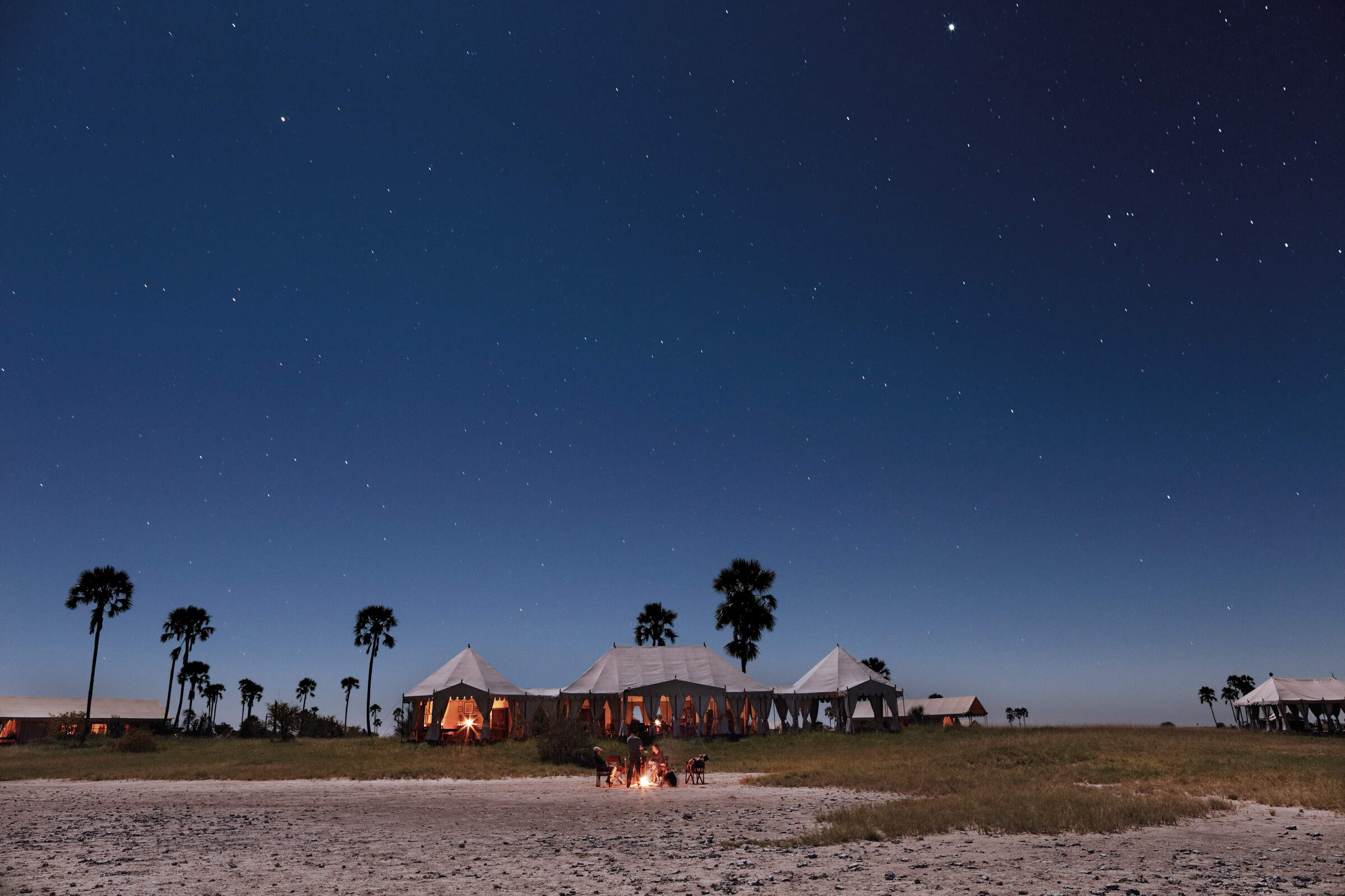
San Camp
The simple but stylish San Camp lies in a stunning location beside the Makgadikgadi Salt Pans, where highlights are quadbiking, meerkats, and Bushmen walks.
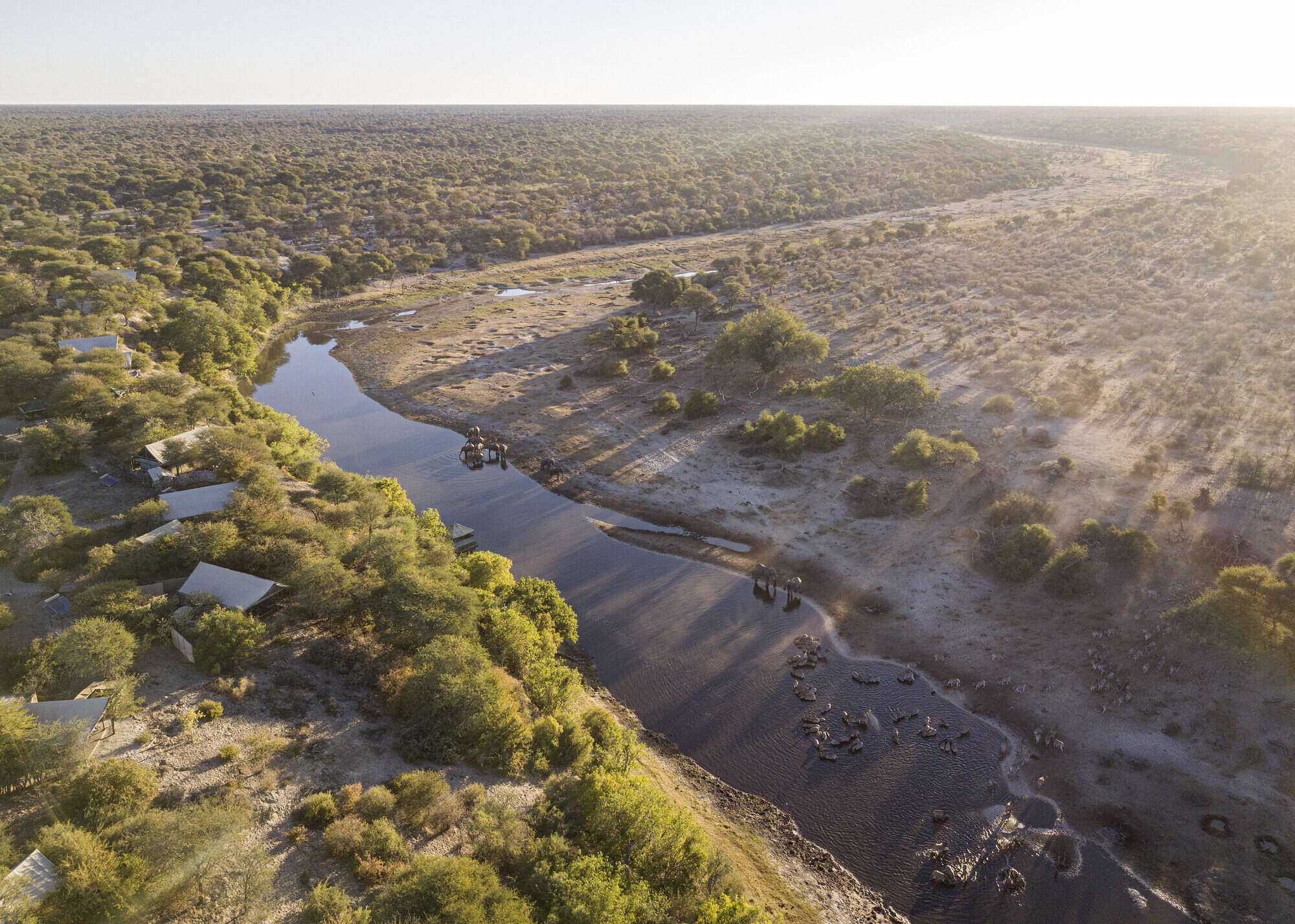
Meno A Kwena
Meno A Kwena Tented Camp is an old-style safari camp, run by an experienced Botswana expert. Overlooking the bed of the Boteti River, it's a great place to relax and watch wildlife at the camp's waterhole.
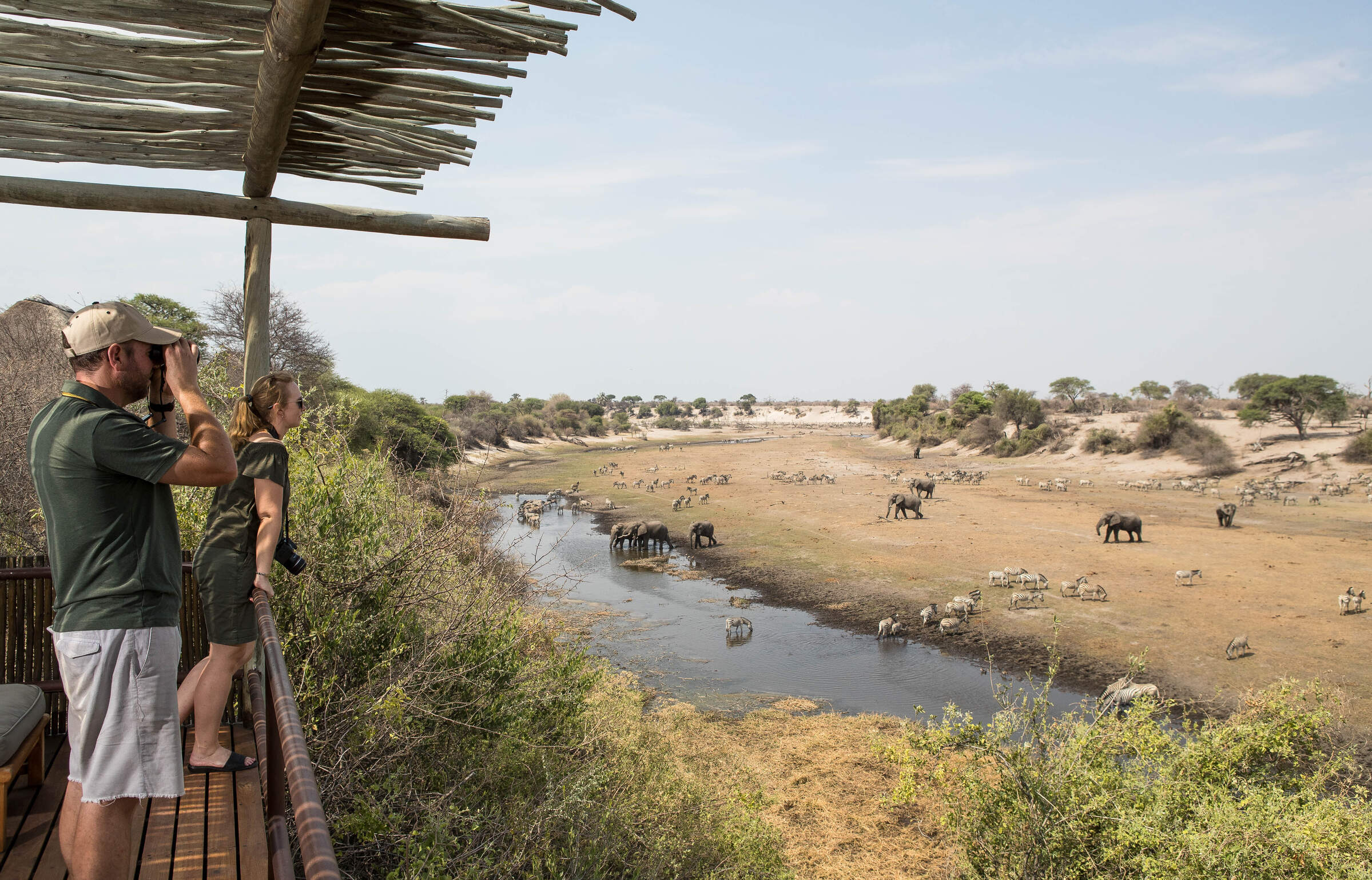
Leroo La Tau
From the western bank of the Boteti River, Leroo La Tau overlooks the Makgadikgadi Pans National Park, where game concentrations are highest from July to October.
When to go to Kalahari's Salt Pans
Our month by month guide: What it's like to visit Jack's Camp in Kalahari's Salt Pans
Jan
Feb
Mar
Apr
May
Jun
Jul
Aug
Sep
Oct
Nov
Dec
Kalahari's Salt Pans in January
January is the peak of the rainy season, bringing short but intense downpours that flood the pans, transforming the landscape into a lush paradise. The Makgadikgadi and Nxai pans become vast grasslands, attracting large herds of zebra and wildebeest as part of their annual migration. The Boteti River swells, supporting a diversity of wildlife.
Birdwatching is exceptional, with migratory birds and flamingos breeding in Sua Pan. While game viewing can be challenging due to dispersed wildlife, patient observers can spot predators like lions and cheetahs taking advantage of newborn prey.
Low-season rates make this an attractive time for budget-conscious travellers.
- Salt pans flood, creating a dramatic transformation
- Zebra migration draws predators
- Flamingo breeding season in Sua Pan
- Exceptional birdwatching and photography opportunities
- Low visitor numbers, offering an exclusive experience
Our view
A good time to visit, with pros & cons
Weather in January
Kalahari's Salt Pans in February
February remains lush and vibrant, with the zebra migration in full swing across the pans. Nxai Pan National Park is particularly rewarding, as grasslands attract large herbivore herds and their predators. The famous Baines’ Baobabs stand starkly against the green backdrop, making for breathtaking photography.
With water sources abundant, birdwatching is at its peak, and flamingos continue to thrive in Sua Pan. The Boteti River remains active, drawing thirsty wildlife. However, thick vegetation can make spotting large animals more challenging.
Camps and lodges offer excellent availability and value during this period.
- Peak of the rainy season, pans fully flooded
- Zebra migration at its most dramatic
- Flamingos still abundant in Sua Pan
- Green season rates offer excellent value
- Lush landscapes provide an ideal setting for photography
Our view
A good time to visit, with pros & cons
Weather in February
Kalahari's Salt Pans in March
March is a transitional month: the main rains beginning to taper off but the Makgadikgadi and Nxai Pan landscapes remain lush and teeming with life. The zebra migration starts moving northward from Makgadikgadi and Nxai, but large herds are still present, making this a great time for game viewing.
If it’s accessible, this is a lovely time to visit Kubu Island, as the contrast between the granite outcrops and the surrounding greenery can be striking. Predators remain highly active, particularly around Nxai Pan and Kukome Island, where they hunt the last of the young antelope. Birdwatching is still rewarding, and as water begins to recede, quad biking opportunities start opening up in drier areas.
- Rains begin to taper off, but pans remain lush
- Final opportunity to witness the zebra migration
- Flamingos start to disperse from Sua Pan
- Good predator-prey interactions
- Shoulder season begins, with fewer tourists
Our view
A good time to visit, with pros & cons
Weather in March
Kalahari's Salt Pans in April
While occasional late rains may occur, April marks the end of the rainy season, with floodwaters receding and the landscape drying out. The Makgadikgadi Pans begin transitioning back to their iconic white salt flats as the water evaporates, creating striking contrasts for photography. This creates a unique landscape where wildlife is easier to spot against the increasingly barren backdrop.
Wildlife concentrates around the remaining waterholes in Nxai Pan, while the Boteti River can becomes a valuable lifeline for thirsty animals. Walks with San Bushmen and quad biking adventures on the salt pans become more accessible.
Night-time temperatures begin to drop, especially in the Central Kalahari area, making for comfortable evening game drives to spot nocturnal animals.
- Floodwaters recede, exposing salt flats
- Wildlife concentrates around remaining water
- Clear skies and mild temperatures perfect for game drives
- Baines’ Baobabs surrounded by seasonal water, ideal for photography
- Last month for good green season game viewing
Our view
A good time to visit, with pros & cons
Weather in April
Kalahari's Salt Pans in May
May is a popular month to visit the Kalahari Salt Pans region. The landscape has transformed, with the vast white expanses of Makgadikgadi Pans becoming more prominent. This creates surreal, otherworldly vistas perfect for photography. Wildlife concentrates around permanent water sources like the Boteti River, offering excellent game viewing opportunities. In Nxai Pan National Park, the famous Baines Baobabs stand out starkly against the drying landscape.
This is an ideal time for quad biking adventures across the salt pans. Cooler temperatures, especially in the mornings and evenings, lead to increased predator activity, and meerkat interactions are particularly rewarding, as they are active in the open plains. The skies remain crystal-clear, making for spectacular stargazing and astrophotography.
- Salt flats dry out, creating surreal landscapes
- Wildlife gathers at permanent water sources
- Perfect temperatures for safaris
- Quad biking becomes widely available
- Meerkat encounters highly rewarding
Our view
A very good time to visit
Weather in May
Kalahari's Salt Pans in June
June marks the official start of the dry season in the Kalahari Salt Pans region, bringing crisp, cool mornings and clear skies. The Makgadikgadi and Nxai pans are now vast, shimmering white expanses, offering incredible photographic opportunities. Wildlife viewing is excellent as animals congregate around the Boteti River.
Night-time temperatures can reach freezing, but daytime temperatures are pleasant. The clear, crisp air enhances visibility, making this a favourite time for serious photographers and one of the best months for stargazing. The atmosphere in June is at its clearest, allowing for spectacular views of the Milky Way. Meerkat encounters continue to be a highlight, with the animals more active in the cooler weather. The salt pans are now bone-dry, opening up thrilling quad biking excursions.
- Cold mornings, comfortable days for safaris
- Wildlife highly visible along the river and scarce waterholes
- Best time for quad biking across the salt pans
- Exceptional stargazing with crystal-clear skies
- Meerkats remain highly active and visible
Our view
Fantastic: the very best time to visit
Weather in June
Kalahari's Salt Pans in July
July offers excellent conditions for exploring the Kalahari Salt Pans. The Makgadikgadi Pans present a stark, lunar-like landscape, perfect for atmospheric photography. Wildlife viewing is superb, with animals concentrated around permanent water sources like the Boteti River. This is an excellent time to visit Nxai Pan National Park, where the famous Baines Baobabs stand out dramatically against the dry landscape.
The clear night skies offer phenomenal stargazing opportunities. Quad biking adventures across the salt pans are popular, providing a thrilling way to experience the vast, otherworldly terrain. Meerkat encounters continue to be a highlight, with these charismatic animals easily observable in the sparse vegetation. Guided walks with San Bushmen offer insights into traditional survival skills in this harsh environment.
- Peak dry season, best time for game viewing
- Ideal conditions for astrophotography
- Wildlife highly concentrated around water sources
- Quad biking across vast salt flats remains a highlight
- Bushmen cultural experiences highly recommended
Our view
Fantastic: the very best time to visit
Weather in July
Kalahari's Salt Pans in August
August marks the height of the dry season and is a popular time to visit the Kalahari Salt Pans, coinciding with northern hemisphere summer holidays. Mornings are cool and days are warm, making it perfect for a range of activities.
The Makgadikgadi and Nxai pans are at their driest, offering surreal, moon-like landscapes. Wildlife viewing is excellent, with animals congregating around the few remaining water sources, particularly along the Boteti River. This is a good time for exciting quad-biking adventures across the vast salt pans – though nights are cold.
For something more sedate, meerkat encounters continue to be a highlight, with clear visibility in the sparse vegetation, and evening stargazing is spectacular due to cloudless skies. The contrast between the white salt pans and the silhouettes of Baines Baobabs in Nxai Pan make for stunning photographic opportunities.
- Peak dry season, animals concentrated at the Boteti River
- Quad biking and guided walking safaris are at their best
- Clear night skies offer stunning stargazing conditions
- Wildlife sightings include elephants, lions, and plains game
- Meerkat encounters continue to be excellent
Our view
Fantastic: the very best time to visit
Weather in August
Kalahari's Salt Pans in September
September brings rising daytime temperatures to the Kalahari Salt Pans, while nights remain cool. The landscape is at its driest, with Makgadikgadi and Nxai pans offering vast, shimmering expanses. This creates ideal conditions for quad biking adventures and stunning photography, especially during the golden hours.
Wildlife activity remains high around permanent water sources, and the dry conditions make it easier to spot predators, particularly around the Boteti River and remaining waterholes. Nxai Pan National Park offers great opportunities to see desert-adapted species. This is a prime time for meerkat encounters, as these charismatic creatures are highly active. San Bushmen cultural experiences are particularly insightful at this time, as they demonstrate survival techniques in one of the driest landscapes of the year.
- Excellent predator viewing as dry conditions continue
- Elephants and large herbivores still frequent waterholes
- Sunsets are especially dramatic due to dust in the air
- Prime month for San Bushmen-guided experiences
- Stargazing and astrophotography remain outstanding
Our view
Fantastic: the very best time to visit
Weather in September
Kalahari's Salt Pans in October
October is one of the hottest and driest months in the Kalahari Salt Pans region, with daytime temperatures often exceeding 40°C/104°F. The Makgadikgadi and Nxai pans are vast, shimmering expanses, creating surreal, mirage-like vistas. This marks the last peak of wildlife concentration at the few remaining water sources before the first rains arrive. Predator-prey interactions along the Boteti River can become particularly dramatic.
Quad biking across the salt pans offers exhilarating adventures and unparalleled views of the lunar-like landscape. Meerkat encounters continue to be a highlight, with clear visibility in the sparse vegetation. As the month progresses, the chances of seeing dramatic dust storms increases, creating otherworldly scenes on the dry pans. The extreme conditions showcase the remarkable adaptations of desert wildlife. Stargazing is exceptional due to very clear skies.
- Hottest and driest month of the year
- Wildlife congregates along river and shrinking water sources
- Predator activity at its peak due to prey vulnerability
- Dramatic sunsets and striking landscape photography
- Quad biking and walking safaris continue to be a highlight
Our view
Fantastic: the very best time to visit
Weather in October
Kalahari's Salt Pans in November
November signals the start of the rainy season, with occasional early showers rejuvenating the arid landscape of the Makgadikgadi and Nxai pans. These rains are often short but heavy, creating spectacular storm clouds and lightning shows. The parched earth quickly absorbs the moisture, and the first flush of green begins to appear. Zebra herds begin returning to the salt pans, following the first shoots of fresh growth.
As water sources become more available, wildlife disperses slightly, but this is still an excellent time to visit. The mix of dry and wet conditions creates a striking contrast for photographers, and birdwatching improves as migratory species return.
- First signs of the wet season with sporadic rain showers
- Early zebra herds return to the pans
- Birdwatching season begins with new arrivals
- Beautiful contrasts between dry and green landscapes
- Shoulder season rates offer good value
Our view
A good time to visit, with pros & cons
Weather in November
Kalahari's Salt Pans in December
The rains in Botswana have now started, bringing some respite to the high temperatures. Game viewing becomes harder as wildlife is more dispersed but great sightings can still be had in the right areas such as Khwai and the Kwara and Mombo concessions.
Areas such as the Makgadikgadi Pans change completely with the salt pans becoming covered in a shallow layer of water attracting large numbers of breeding flamingos. Low-season rates at many camps are a draw.
- Temperatures starting to fall from the highs of October/November
- Very high chance of rain, usually large heavy storms for short periods
- Flamingos return to breed at the Makgadikgadi Pans
- Wildlife more dispersed, so game viewing more challenging
- Typically low-season rates in the camps
Our view
A good time to visit, with pros & cons
Weather in December

Looking for inspiration on where to travel next?
Visit our trip chooser to explore your options and find inspiration for your perfect African adventure
Inspire me